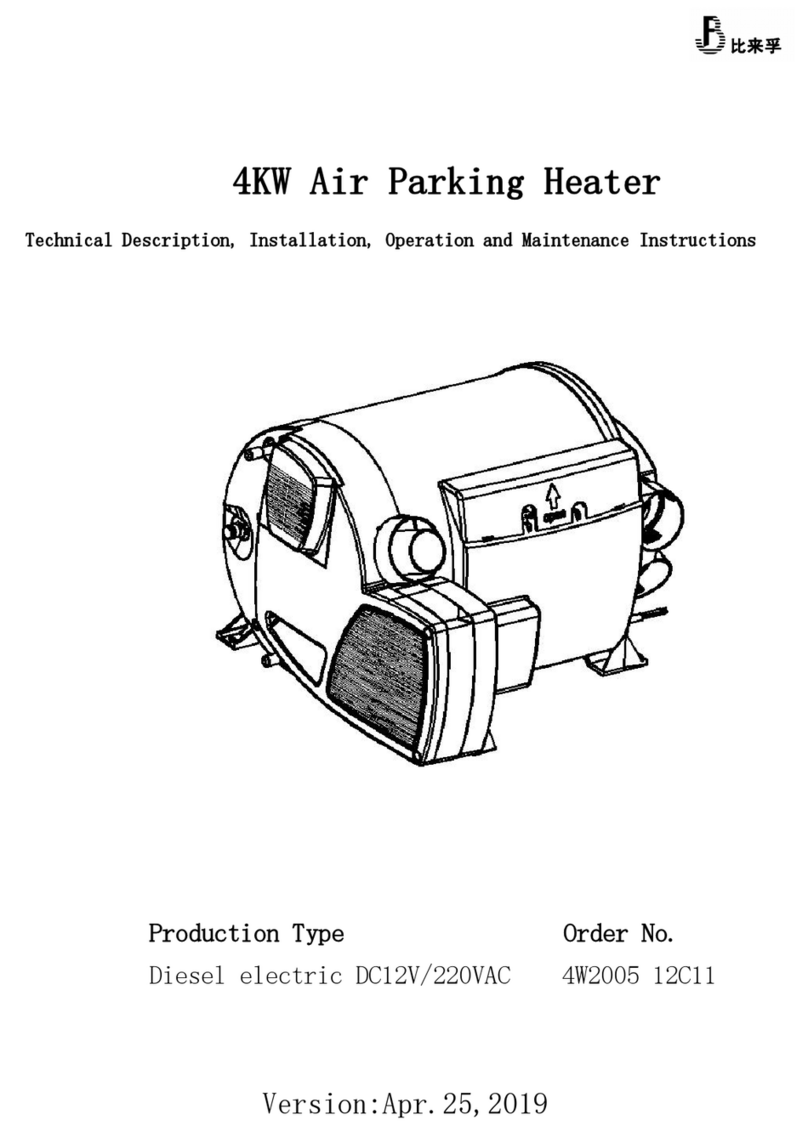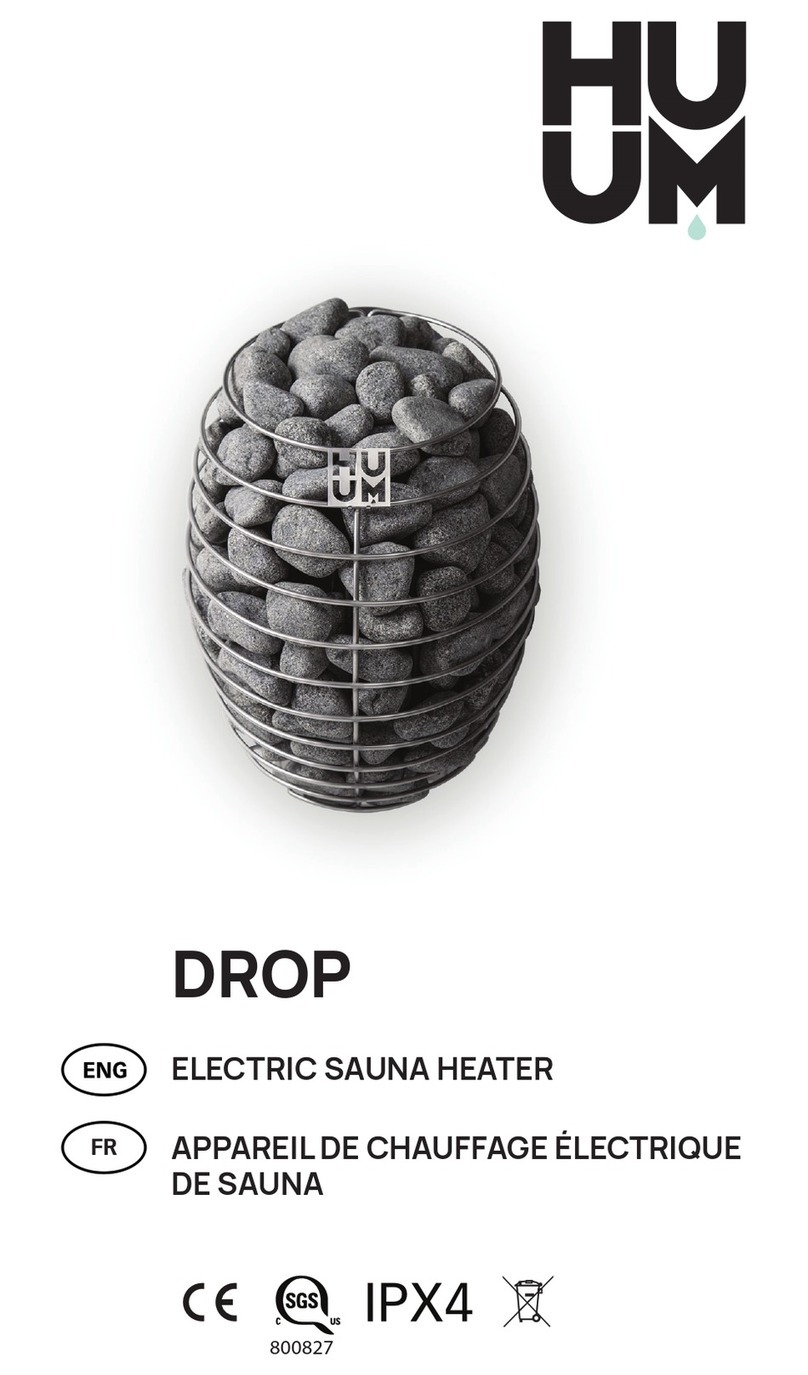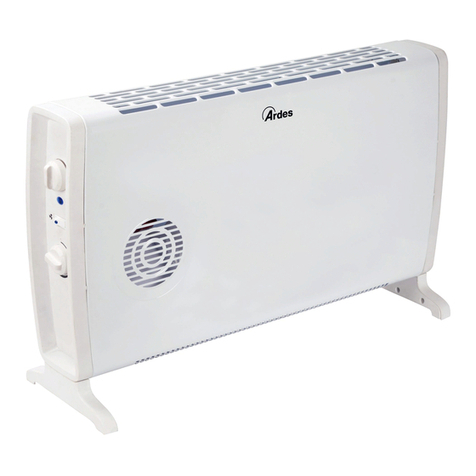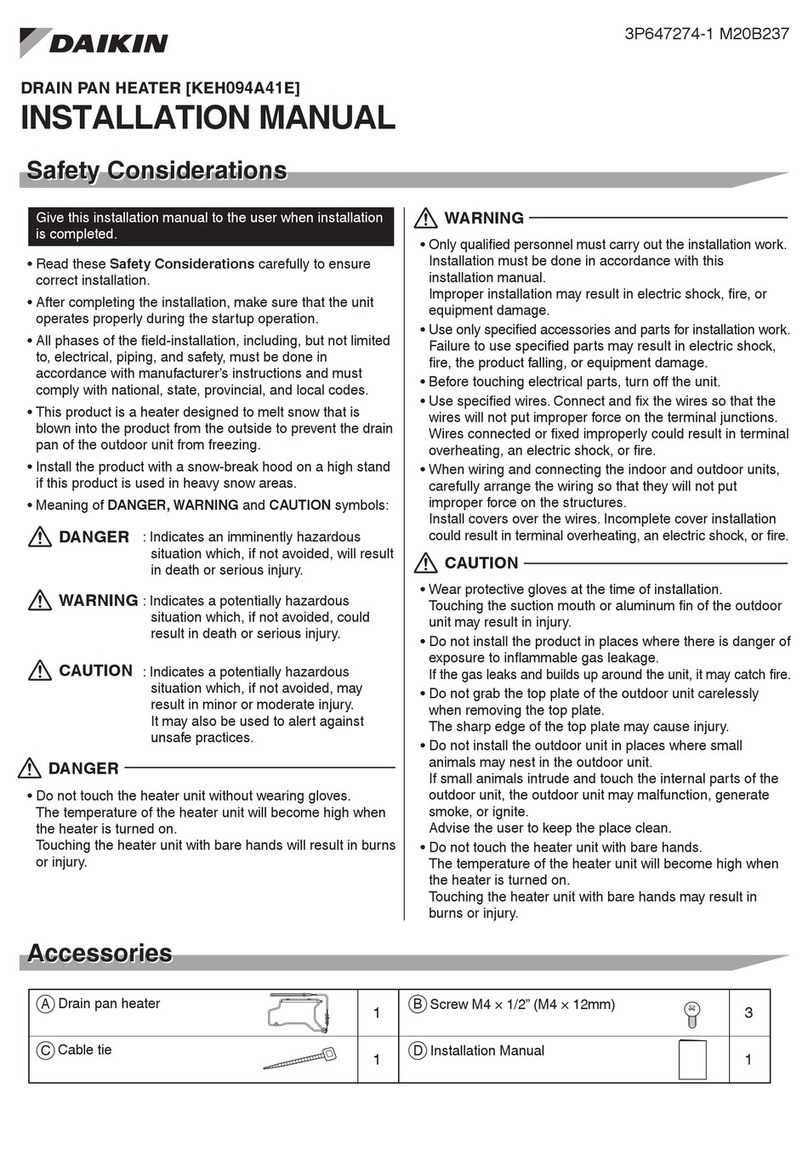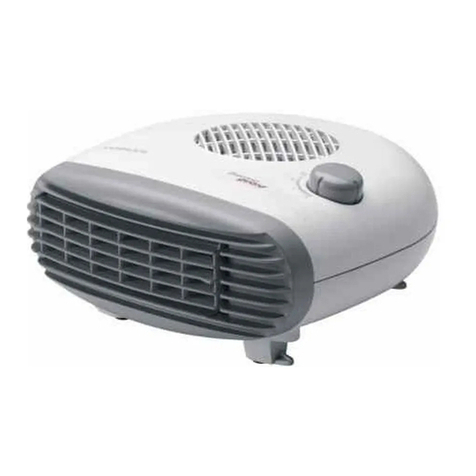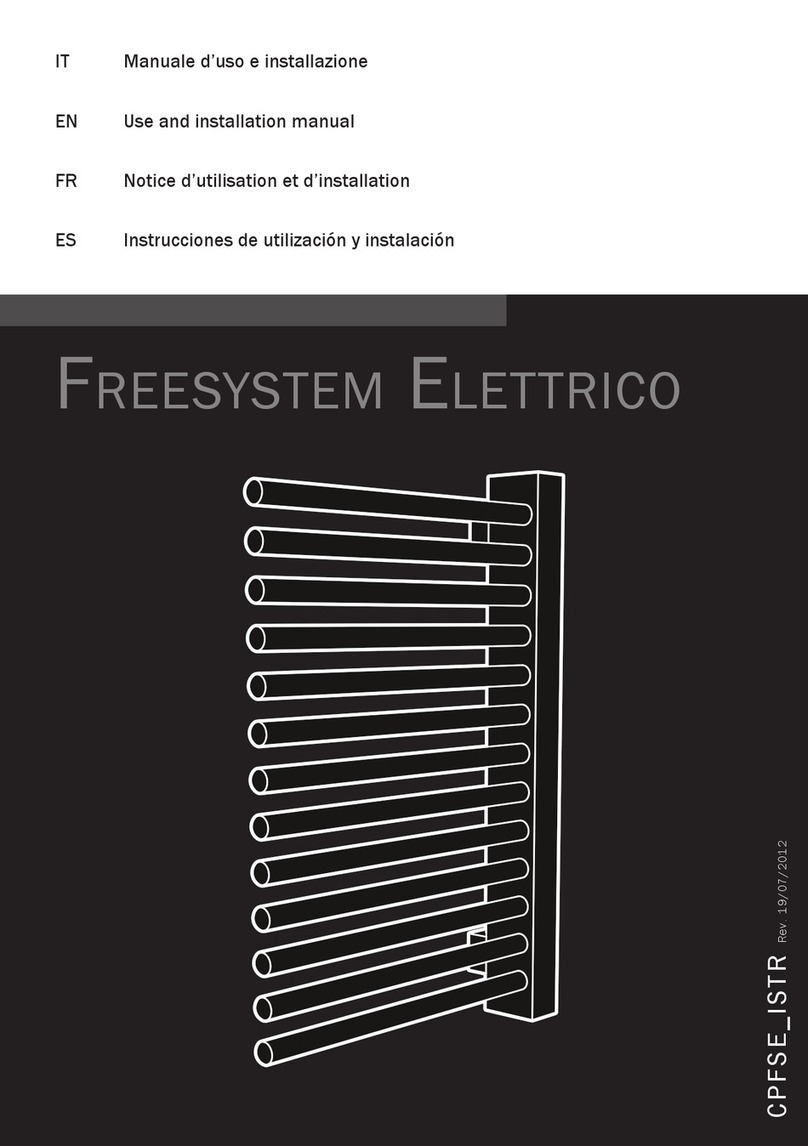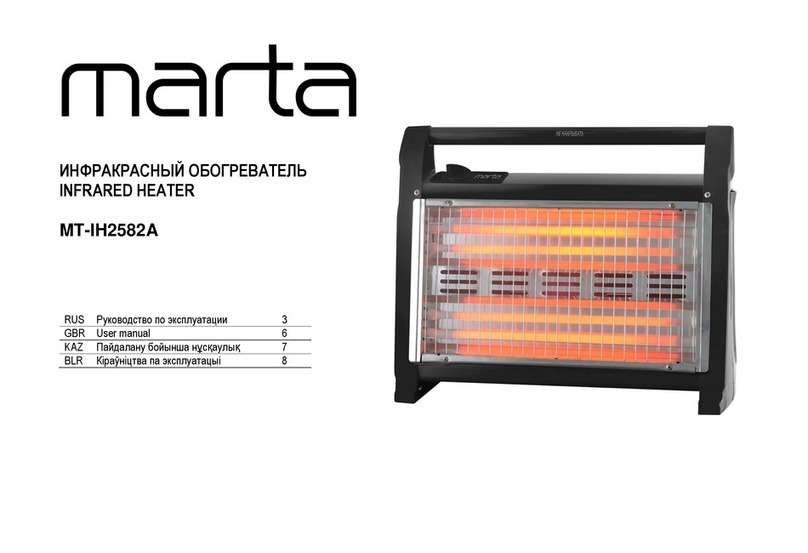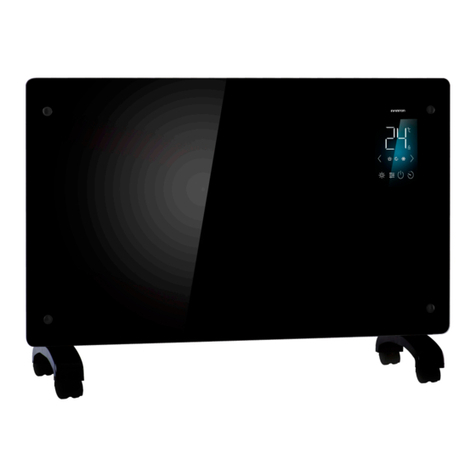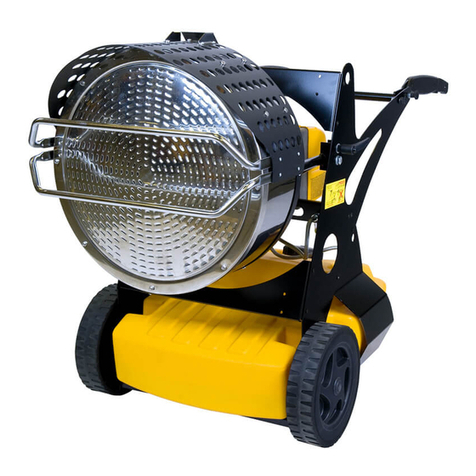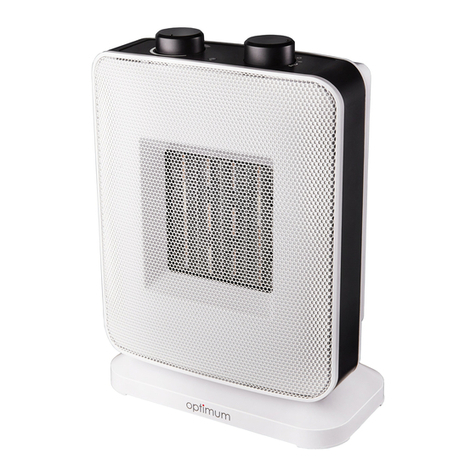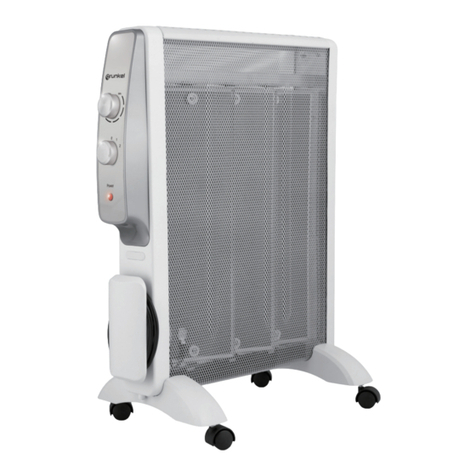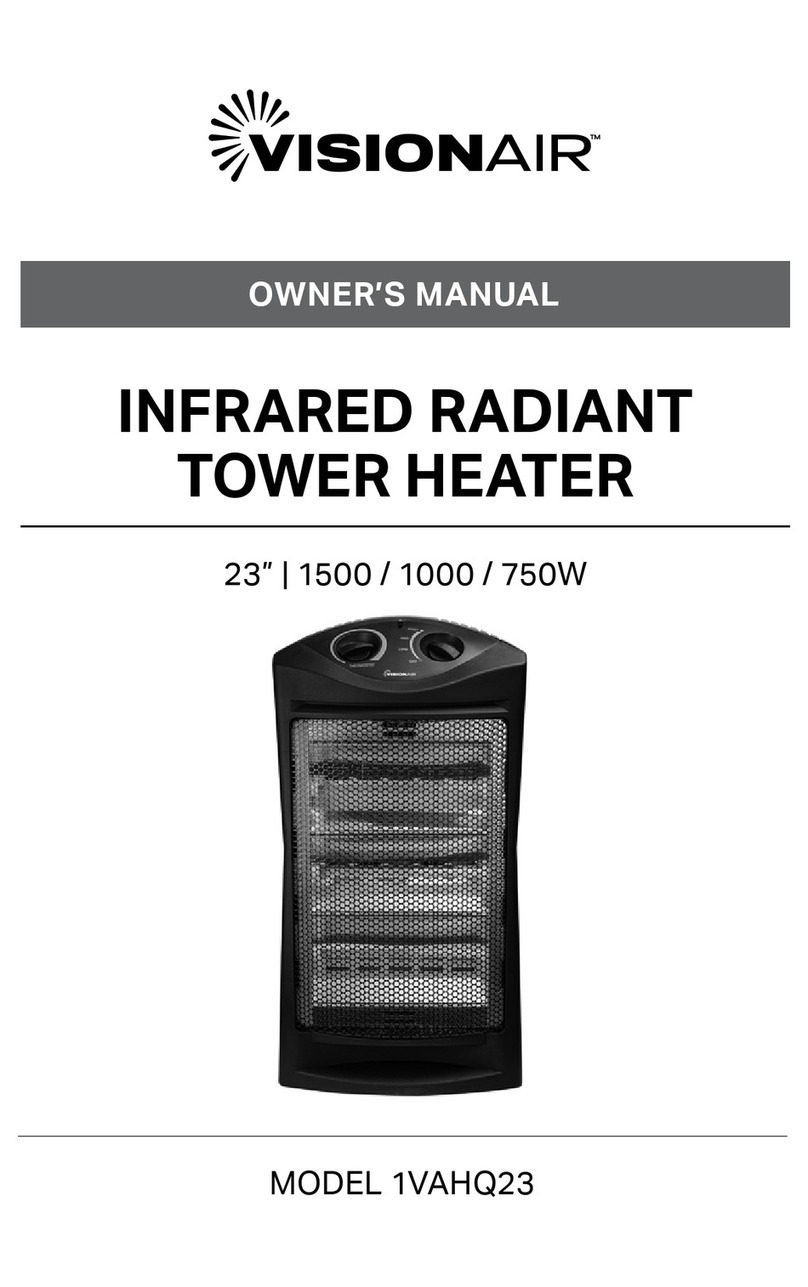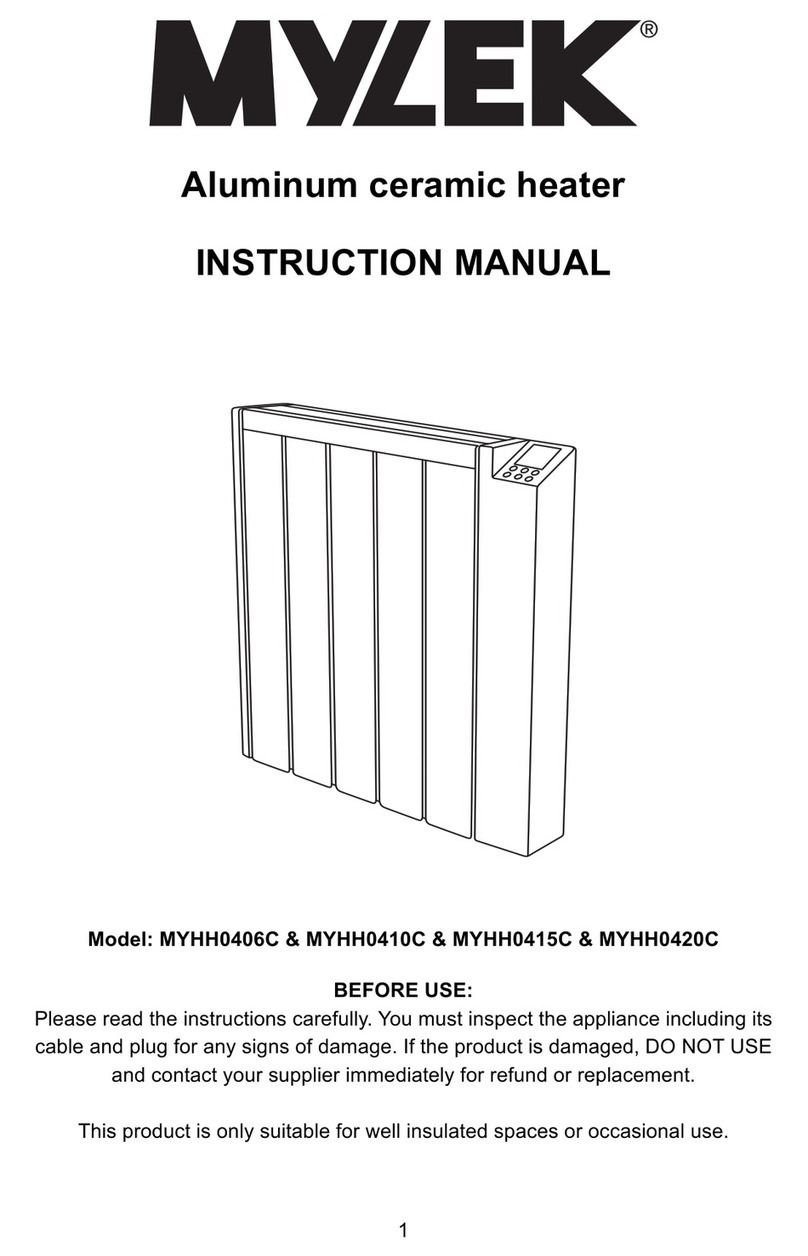Belief YFY-6E/1 Parts list manual

Belief
6KW E-Gas Hot Water & Warm Air Integrated Heater
Technical Description, Installation, Operation and Maintenance Instructions
Production Type Order No.
Liquefied gas electric heating DC12V/220VAC 4W2005 12C11
Version: Oct 15, 2018

Belief
Foreword
Thank you for using the Belief parking heater
This manual describes the technical description, installation, operation and maintenance
instructions for the parking heater. To ensure the correct use of the heater please read this manual
carefully before installation and use. Please keep it properly after reading it. For review.
Note:
●The contents of this manual are subject to change without prior notice, but the instructions
are guaranteed to be consistent with the products purchased.
●we try our best to express the problems that users should know through the instructions. If
you have questions or find something wrong, please contact us directly.
●When the user unpacks for the first time, check the main unit and accessories against the
packing list. If you find any problems, please contact the dealer immediately.
●If there is a problem in use, please contact the company's marketing department or our
authorized customer service station. We will be happy to help you.
Please carefully save the after-sales service warranty sheet and provide feedback as required.
This sheet is the only valid proof of after-sales service.
Note:
Must be installed and used in accordance with the requirements of the manual to ensure long-term use of the
product!
2018 10 15 Edition Subject to Change

Belief
1
1.Application
YFY-6E/1 Model gas heater (hereinafter referred to as
heater) is a special heater for caravan that integrates
hot water and warm air. This heater cannot be used in bus
or dangerous goods carriers.
2. Main Technical Data
Table 1
3.Function
The heater is a hot water and warm air integrated machine,
which can provide domestic hot water while heating the
occupants. This heater allows use during driving. This
heater also has the function of using local electricity
heating.
In hot water warm air work mode, this heater can be used
to heat both the room and the hot water. If only hot
water is needed, please choose hot water working mode.
When the ambient temperature is below 3°C, please empty
the water in the water tank to prevent freezing of the
water tank.
There are three energy options to choose from:
-- Gas Mode
Heater automatic adjust the power。
--Electrical Mode
Manually select the 900W or 1800W heating mode according
to the power supply capacity of the RV camp.
--Hybrid Mode
When the power demand is low (for example, maintaining
the room temperature stage), the electrical heating is
preferred. Until the city electricity cannot meet, the
gas heating is started, and the gas heating function is
turned off first in the power adjustment phase.
In hot water working mode,gas mode or electrical mode
is used to heat the tank。The tank temperature can be
set to 40°C or 60°C.
-- Gas Mode
The heater operates at the lowest power. Stop heating
immediately after reaching the set temperature.
--Electrical Mode
Manually select the 900W or 1800W heating mode according
to the power supply capacity of the camp site.
4. Safety Instructions
The gas obtained from the liquefied gas tank is
mandatory to be in a gaseous state. Liquefied gas is
not allowed to avoid danger.
If a gas leak occurs or smells of gas:
--Immediately extinguish the open flame
--Open doors and windows
--Close all valves, liquefied gas tanks
--No smoking
--Do not operate any electrical switches
--Ask the professional to thoroughly check the gas
system
Rated Voltage
DC12V
Operating Voltage Range
DC10.5V~16V
Short-term Maximum Power Consumption
5.6A
Average Power Consumption
1.3A
Gas Heat Power (W)
2000
4000
6000
Fuel Consumption (g/H)
160
320
480
Gas Pressure
30mbar
Warm Air Delivery Volume m3/H
287max
Water Tank Capacity
10L
Maximum Pressure of Water Pump
2.8bar
Maximum Pressure of System
4.5bar
Rated Electric Supply Voltage
~220V
Electrical Heating Power
900W
1800W
Electrical Power Dissipation
3.9A
7.8A
Working (Environment) Temperature
-25℃~+80℃
Working Altitude
≤1500m
Weight (Kg)
15.6Kg
Dimensions (mm)
510×450×300

Belief
2
5.Heater Installation
The typical installation of the heater is shown in
Figure 1.
★ Must be installed and repaired by professionals
authorized by the company!
The company does not bear any responsibility for the
following acts:
--Modified heater and accessories
--Modification of exhaust lines and accessories
--Do not follow the operating installation instructions
--Do not use our company's special accessories
Figure 1
1-LCD control switch
2-External temperature sensor
3-Recirculating air inlet (minimum 150cm2)
4-Heat pipe
5-Heat outlet
6-Smoking cowl
Figure 2

Belief
3
Heater installation Figure 3.
The heater installation location should be selected from
load-bearing floor, double floor or underfloor.
If there is no suitable floor, you can first make a load
bearing surface with plywood.
★The heater must be firmly fixed to the mounting
surface with screws to prevent damage to the gas
pipeline during driving and cause danger.
Depending on the actual installation, may only install
three screws. Two die-cast aluminum fixing screws are
fixed then choose a plastic right angle to fix it.
To ensure that the heater evenly distributes heat, the
heater should be installed in the center as much as
possible to ensure that the heating circuit is equal
long as possible.
No cover is allowed to add to the heater surface.
Figure 3.
1_12V Power cord 2_LCD switch Lead wire 3_LCD switch back cover 4_LCD switch bracket 5_Cross head self-
tapping nail M3*10 6_LCD control switch 7_Cross countersunk head flat tail self-tapping nail M3*6 8_Cross
head self-tapping ST5*25 9_Heater 10_Controller cover 11_External temperature sensor lead wire 12_External
temperature sensor 13_φ8 Elbow transition fitting 14_Rubber strip clamp 15_ Cross pan head self-tapping
screws ST5×16 16_φ8 Straight transition fitting 17_ Precision tube 18_ Fitting nut M14*1.5 19_ Ferrule
20_φ10 Hose (gas) transition fitting 21_φ10 Steel (water) pipe elbow transition fitting 22_ Hose(water)
transition fitting 23_ Intake pipe mounting clamp 24_ Cross pan head tapping screw ST3.5×25 25_ Air intake
pipe 26_ German type clamp 27_ Exhaust pipe 28_Sealing rubber spacer 29_(Exhaust pipe) clamp 30_Intake and
exhaust combine cowl 31_Intake and exhaust combine cover 32_Air outlet 33_Hot air tube 34_ Bellows buckle
35_T-fitting 36_φ60 connecting pipe 37φ60 elbow fitting A-connect to 12V Battery B- connect to gas adjust
valve C- connect to water equipment D-connect to system water tank E-hook,clamp LCD switcher cord

Belief
4
The size with* is the smallest size, leaving enough
space to connect accessories such as gas and water
pipes.
To prevent the danger from heater accidentally
loosening, the upper cover of the heater compartment
is screwed to the upper cover (Figure 4-1). Next to
the installation location it is necessary to install a
strong partition strip in front of the heater,
perpendicular to the direction of travel. Above the
floor height180mm can be attached to a septum (minimum
30*50mm).
Heat sensitive objects and flammable objects should be
placed away from the heater.
★ The exhaust cowl must be on the side wall or
ceiling.
In the exhaust cowl installed area,there is no
ventilation window in the range of 300mm, and there is
no refueling port or tank respirator in the range of
500mm.
The exhaust cowl is mounted below the window that is
close to or openable. A window switch should be
installed to ensure that the heater is turned off
automatically when the window is opened.
Air Inlet Hose Installation
The exhaust pipe is pass through the intake pipe.
The length of the intake and exhaust pipe is as shown
in Fig. 6, and the shortest is 60cm and the longest is
100cm. The exhaust cowl is only allowed under the
exhaust outlet 20cm.
After the intake and exhaust pipes are pierced from
the through holes, they must be cut short, and the
exhaust pipes are slightly shorter than the intake
pipes. Avoid excessive expansion or tension on the
exhaust pipe.
Figure 4
Figure 7
Figure 6
Figure 5

Belief
5
The length of the intake and exhaust pipes is 100 cm
to 200 cm, as shown in Figure 7. The piping must be
arranged in the ascending direction。
The Exhaust Cowl (air inlet and outlet)Installation
Select a flat mounting surface so that combustion air
can enter from all sides. Drill one hole of φ83. Seal
(Fig. 8-8), with the plane facing the exhaust cowl.
Wear the fixing clip before installing the exhaust
pipe (Figure 8-3). Pay attention to the installation
of the smoke cap upwards。
20mm at the end of the exhaust pipe should be
compressed, do not straighten. Insert the exhaust pipe
into the exhaust cowl interface(Figure 8-10),as
deep as possible。Try to fix the clips on the top,
tighten.
Place the air intake pipe (Figure 8-2) over the
exhaust cowl tooth (Figure 8-11). Set on the fixed
clip(Figure8-7), tighten.
Secure the exhaust cowl with 6 screws (Figure 8-9).
Use 2 screws to fix the exhaust cowl.
Fix the exhaust pipe on the side wall with mounting
clip.
Connect Air Inlet Pipe to The Heater
20mm at the end of the exhaust pipe should be
compressed, do not straighten.
Try to insert the exhaust pipe on exhaust port as deep
as possible。fix the clip on top, tighten.
Place the air intake pipe (Figure 9-3) over the air
inlet port (Figure 9-5). Set on the fixed clip
(Figure9-6), tighten.
Warm Air Intake
The warm air intake is drawn in by the heater. There
must be a total area between the room and the heater
not less than 150cm2 opening.
Ensure that the warm air intake is not contaminated by
the engine or heater exhaust, if necessary, with
structural isolation measures.
Warm Air Distribution
Most of the warm air is imported into the floor area
of the living compartment through the bellows.
The four air outlets on the heater are connected to
the φ65 bellows. Use only pressure piping that meets
the quality requirements of the Belief. Other pipes
Figure 10
Figure 11
Figure 8
Figure 9

Belief
6
that do not meet our quality standards (especially
wind resistance, pipe diameter and number of ripples)
shall not be used. If the warm air duct must withstand
a considerable amount of bending immediately after the
hot air outlet of the heater in a limited space, we
recommend using a 90° elbow (Figure 3-37). This elbow
can be connected to a diameter of mm hot air duct.
In the case where the length of the pipe is less than
2 meters, the air outlet cannot be installed at a
height higher than the connection of the warm air
duct. When the pipe length is less than 50cm, the pipe
must be siphon between the connector and the outlet.
These measures prevent the undesirable heating caused
by (fairing effect) convection of the vehicle during
summer operation.
★The warm air pipe must be firmly inserted into the
connection port.
To get the best warm air distribution, Belief
recommends using 4 warm air outlets for the heater.
If only three warm air outlets are required, then a
lower warm air outlet must be selected to seal.
★ The cross section of the heater duct must not be
reduced due to pipe connections or the analogue.
Gas Connection
The heater operating pressure must be in compliance
with a 30 Mbar liquefied gas supply.
When the gas pipe is cut off, clean the port flash and
burrs.
The paving of the pipe must make the heater easy to
disassemble for maintenance work.
Use high-pressure air to purge internal debris before
installing the gas pipe.
The turning radius of the gas pipe is not less than
R50, and it is recommended to use elbow pipe to pass
the joint of right angle.
★ The gas interface (Figure 13-2) cannot be truncated
or bent.
Before connecting to the heater, make sure that the
gas line is free of dirt, shavings, etc.
The gas system must comply with the technical,
administrative, and legal regulations of the country.
Anti-collision safety valve (optional)
To ensure safety during driving, it is recommended to
install a crash safety valve that must be installed
after the liquefied gas tank regulator. when Impact,
tilting, the anti-collision safety valve automatically
cuts off the gas line.
Connecting Water Pipe
The water tank can be supplied with a pressure pump or
immersion pump with a pressure of 2.8 bar.
If the tank is connected to a centralized water supply
(rural or urban connection), or if a high-pressure
pump is used, a pressure reducer must be used, which
will prevent pressures above 2.8 bar.
★ The temperature rises and expansion of the water
before the pressure relief valve is triggered may
Figure 12
1
2
Figure 13
Figure 14
To heater
To liquefied gas
pressure regulating
valve
Reset button

Belief
7
result in pressures up to 4.5 bar (may also occur with
the immersion pump). Connected to the water tank and
safe/the water pipe of the drain valve must be safe
for drinking water, withstand pressure (up to 4.5 bar)
and heat-resistant water up to 80 °C.
If an immersion pump is used, a check valve must be
installed between the pump and the first branch
(Figure 15-1). Observe the flow direction when
installing the check valve.
Anti-freezing automatic waterproof device (Figure 15-
4, optional), a mechanical safety / drain valve. When
there is a danger of frost it will automatically drain
the water from the tank through the scupper. If there
is excessive pressure in the system the pressure will
be automatically released intermittently through the
pressure relief valve (Figure 15-8, optional).
External Temperature Sensor Installation
Install inside the vehicle and measure the room
temperature. The sensor installation location is
determined by the RV manufacturer based on the
specific conditions of the vehicle. When selecting the
installation location, please note that the external
temperature sensor should not be subjected to direct
heat radiation.
For optimum room temperature control, an external
temperature sensor is installed above the entrance
door.
Make sure the external temperature sensor is always
installed on the vertical wall. There must be free
flowing air around it.
Drill a hole with a diameter of 10 mm. Single wire
terminal passes through the opening from the back and
connect the end of the cable to the sensor with an
insulated connector plug (no need to observe
polarity). Slide into the external temperature sensor
and connect the two ends of the cable and the two
insulated connectors to the heater electronics (if
necessary, extend the cable to a maximum length of 10
meters, 2 x 0.5mm2 cable).
The external temperature sensor provided must always
be connected or the heater will switch to malfunction.
LCD Control Switch Installation
The gas heater must be operated with a dedicated LCD
switch. See the relevant instructions for details.
Electrical Connection
Lay the wires to avoid scratches. If there is a sharp
edge, if the metal panel is threaded, use a lead
bushing or edge protection accessory.
The connector cable must not be attached or in contact
with metal surfaces, exhaust pipes or hot air ducts.
Figure 16
Figure 15
Figure 17

Belief
8
The electrical connector is located below the
controller cover. The controller cover can be removed
by pressing and simultaneously sliding in the
direction of the arrow.
When removing or installing the controller cover, make
sure that the connecting cable is not pulled out or
squeezed.
1-DC12V positive 2-DC12V negative
3-Fuse 4-Window Switch
5-External Temperature sensor
6,7- Control switch
When the window switch is not installed, the short
connecting wire cannot be removed.
All cables connected to the heater must be hung in the
direction of sagging. This will prevent condensate
water slipping off from the connector cable and into
the heater.
The connector cable and plug must be free of force.
Bundling connector cable (See Figure 20), attach it to
the housing with a cable tie to eliminate tension.
all cables must be securely connected and must not be
loose or disconnected due to vibrations, causing a
fire hazard!
DC12V Power Supply
the heater's electrical wiring, switches, and control
equipment must be in locations that would not
adversely affect its operation under normal operating
conditions.
The heater has reverse polarity protection. If the
controller is not connected correctly, the LED
indicator will not work.
To ensure the best power supply, the heater must be
connected to the vehicle power supply (or battery)
protected by the fuse (10A) with a 2 x 2.5 mm2 cable
(2 x 4 mm2 for lengths over 6 meters).
If necessary, the voltage drop of the power supply
line must be considered. Connect the negative line to
the main ground line.
If the heater is directly connected to the battery,
the positive and negative lines must be protected.
do not connect other power consuming devices.
Figure 18
Figure 19
Figure 20

Belief
9
Figure 21

Belief
10
6. Operational Precautions
Gas heating is not permitted during refueling or in
confined spaces (closed parking lots, workshops or ferry
cabin).
Regularly check that the intake and exhaust pipes are
in good condition and that the fixing is reliable,
especially after a trip. Also check the fixing of the
intake and exhaust pipes and the exhaust cowl.
When a black smoke occurs,must be inspected and repaired
by professionals authorized by the company!
Make sure that the exhaust pipe at the exhaust cowl and
intake pipe are unobstructed, and there are no
obstructions such as snow mud, ice accretion, and leaves.
The warm air outlet and the circulating air inlet are
unobstructed to prevent the heater from overheating.
Under overheating the overheat switch will immediately
cut off the gas supply.
If the gas heater is to meet the heating needs during
driving, a safety shut-off device should be installed.
★If without a safety shut-off device,the liquefied gas
tank valve must be shut off before the driving。
12V Fuse
replace only with the exact same fuse T10A.
~12V Fuse
★ Fuse and Wire harness must be replaced by
professionals authorized by the company。
★ All power must be disconnected before opening the
control enclosure.
fuse specification: T10A slow fusing
~220V Overheat Protection
The electrical heating function has a mechanical
overheat protection switch.
If the 12V power supply is interrupted during heating
or after the heating process, the heater residual heat
triggers the overheat protection switch.
After the water tank temperature has dropped, remove the
controller cover and press the reset button to reset the
overheat protection switch.
Figure 22
Figure 23
Figure 24

Belief
11
7. Operating Instructions
Please read the operating instructions carefully
before proceeding.
Start the Heater
Use a dedicated LCD switch to operate.
the main unit heating uses gas, electric, hybrid mode,
heating water tank or not heating water tank are set as
needed.
Check the power supply capacity of the RV camp and select
the 900W (3.9A) or 1800W (7.8A) working mode.
--Check if the exhaust cowl is unobstructed
--Opening liquefied gas tank valve
-- Water tank filled with water when needed
Switch Off the Heater
--Use a dedicated LCD switch to operate.
- After the heater is turned off, the combustion-
supporting fan and the heating fan will continue to
operate for a few minutes depending on the temperature
of the furnace.
In case of freezing hazard, the water tank must be
emptied.
--Close the circulating water pump
-- Turn on the hot water tap in the kitchen and bathroom
★ Check the water with a 10L bucket to ensure that the
tank is empty.
the liquefied gas tank valve must be shut off when the
heater is not in use for long time or before driving.

Belief
12
6. Failure
6.1 General Failure Handling
6.1.1 During the use of the heater, it may appear that
it cannot start normally or turn off itself after
starting and is in the fault lock state. At this time,
the heater can be turned off for more than 5S and restart.
6.1.2 The heater may cause circuit failure due to the
following reasons: the connector is rusted, the poor
contact, the plug is incorrect, the wire or fuse is
rusted, the battery pile is rusted, etc.
Pay attention to inspection, maintenance and prevent
these phenomena from occurring during use.
6.1.3 When the following conditions occur, it can be
handled and eliminated by the user:
●The heater does not start after the power is turned
on and the LCD switch screen does not light. The reason
is that the fuse is open, or the wiring is wrong. In
addition, check whether the plug on the LED switch lead
wire is properly connected to the host.
6.2 Fault Lock Status
6.2.1 The fault generated by the heater is indicated
by the fault code on the LED switch.
6.2.2 The faults can be eliminated according to the
methods listed in Table 2.
Fault Lock Status Debug Method
Fault
Code
Fault Name
Fault Debug Method
10
Overvoltage fault
Check vehicle power supply system
11
Under voltage fault
Check vehicle power supply system
21
Warm air outlet temperature sensor disconnection
Check if the sensor is in good condition
22
Warm air outlet temperature sensor short circuit
Check if the sensor is in good condition
23
Water temperature sensor disconnection
Check if the sensor is in good condition
24
Water temperature sensor short circuit
Check if the sensor is in good condition
25
External temperature sensor disconnection
Check if the sensor is in good condition
26
External temperature sensor short circuit
Check if the sensor is in good condition
27
Combustion support temperature sensor disconnection
Check if the sensor is in good condition
28
Combustion support temperature sensor short circuit
Check if the sensor is in good condition
31
Combustion failure
a.Check gas supply system
b.Check whether combustion inlet and outlet are blocked
c.Check the Ignition coil, ignition electrode, flame sensor
32
Combustion failure
a.Check gas supply system
b.Check whether combustion inlet and outlet are blocked
c.Check the flame sensor
33
Flame sensor fault
a.Check the flame sensor lead wire
b.Check the flame sensor
41
Warm air outlet overheats
Check whether air outlet is blocked
42
Warm air overheats switch protection.
a.Check whether air outlet is blocked
Check warm air overheat switch
Table 2

Belief
13
Fault Lock Status Debug Method
Fault
Code
Fault Name
Fault Debug Method
43
Water overheat
a.Check whether water depletion in the tank
b.Check if the sensor is in good condition
c.Check whether air outlet is blocked
44
Water overheat switch protection.
a.Check whether air outlet is blocked
b.Check water overheat switch
45
Overheating fault
a.Check whether air outlet is blocked
b.Check water temperature sensor
c.Check warm air sensor
51
Communication fault
Check interconnecting cable
71
Gas valve failure
Check gas valve coil and lead wire
72
Gas valve power failure
Replacement motherboard
81
Combustion support fan disconnection
Check combustion air blower
82
Combustion support blower boot failure
a.Check the blower motor lead wire
b.Check combustion air blower
83
Combustion support blower spindle speed too
low
Check combustion air blower motor
84
Warm air blower motor disconnection
Check warm air blower motor
85
Warm air blower motor boot failure
Check the blower motor lead wire
Check warm air blower motor
86
Warm air blower spindle speed too low
Check warm air blower motor
91
Ignition coil fault
Check ignition coil and lead wire
92
High voltage power supply fault
Replacement motherboard
93
High voltage power supply fault
Replacement motherboard
94
Gas valve power failure
Replacement motherboard
110
Window alarm
Check window switch interconnecting cable
120
Low voltage alarm
Recommended charging
220
220V No connection
Check alternating 220V power supply system
Table 2 to continue

Belief
14
7. Operational Precautions
●Initial Installation
–Flush the water tank with clean water before the
heater is first installed. When the heater is not in
use, please vent the water tank to avoid freezing the
water tank. The company is not responsible for damage
to the water tank caused by freezing.
--Turn the circulating water pump on
-- Turn on the hot water tap in the
Kitchen and bathroom, until the air is vented, and water
tank is full, outcoming water is not discontinued
-- Test run before the heater is used. Carefully check
the leaks and safety conditions of all connections
during the test run. If there is heavy smoke, abnormal
combustion noise or gas odor, turn off the heater and
unplug the fuse to make it inoperable. It can be used
after being repaired by professionals.
–The odor may be emitted for a short time when the heater
is used for the first time. This is normal for the first few
minutes of the start of the run, it does not indicate that
the heater is malfunctioning.
●Seasonal Maintenance
–Before each heating season, a special inspection must
be carried out by a professional to carry out the
following maintenance work:
Check the inlet and outlet of air for contamination
and foreign matter.
Clean the external of heater
Check the circuit connections for rust and looseness.
Check whether the inlet and outlet of air is blocked or
damaged.
Check if a gas leak occurs or smells of gas:
●Long-term halt
–When the heater is not used for a long time, it should
be run every 4 weeks for about 10 minutes each time to
prevent the mechanical components such as solenoid
valves and combustion air fans from malfunctioning (get
stuck).
–The air inlet and outlet of the heater must be kept
free from clogging and dirt, so that the warm air duct
is unobstructed to prevent overheating.
●Heater Lifetime
–The heat exchanger of heater should not be used for
more than 10 years. After expiration, it must be
replaced with genuine parts and replaced by the heater
manufacturer or its authorized agent.
–The exhaust pipe from which the heater emits exhaust
gas must be renewed with genuine parts when the usage
time reaches 10 years.
- It is the responsibility of the operator to replace
the gas pressure regulator and gas line on a regular
basis (by expiration date).
Other Operational Precautions
–The tank must be descaled regularly, at least twice
a year.
–During the transportation and storage process, the
ambient temperature of the heater should not exceed -
40°C ~ 85°C to prevent damage to electronic components.
–Only authorized customer service stations are allowed
to install and repair heaters, and non-original parts
are prohibited from danger.
–The heater is damaged due to installation and
operation not according to the instruction, and the
manufacturer is not responsible for the warranty.
Must shut-off the heater before refueling
–When performing electric welding on a car, first
remove the positive line of the heater from the battery
and ground it to prevent damage to the controller.

Belief
15
8. Packing List
Note: Items 20 to 34 are additionally included in the
accessory box.
Packing List
No.
Name
Specification
Quantity
Order Code
1
Instruction book
YFY30-6E/1
1
22020202400
2
Heater
E-Gas Hot Water/Warm Air
Integrated Heater
1
22020202700
3
Cross head self-tapping screw
ST5*25
5
12050016100
4
12V Power cord
4m
1
12031101600
5
External temperature sensor
NTC10K
1
31011102100
6
LCD control switch
MNB-V-FY
1
31011104400
7
LCD control switch lead wire
6m
1
12031101500
8
Controller cover
260×75×22
1
12021100900
9
Precision tube (black coating on the outside)
8.00×1.00×2500
1
13012200100
10
Ferrule
φ8 Pipe transition piece
1
12050301300
11
Fitting nut M14*1.5
φ8 Pipe transition piece
1
12050301200
12
Rubber strip clamp
φ8
8
12050200800
13
Cross pan head self-tapping screws
ST5×16
12
12050007300
14
φ8 Straight transition fitting
1C-14RN
1
12011103100
15
φ8 Elbow transition fitting
1C9-14RN
1
12011103200
16
φ10 Hose transition fitting
φ10
1
12011103000
17
Hose(water) transition fitting
20411-16-06T
2
12011103300
18
φ10 Steel (water) pipe elbow transition fitting
1C9-16RN
2
12011103400
19
Nylon cable tie
4×200
10
21990000000
20
Intake and exhaust combine cowl
φ110×108
1
12011101900
21
Intake and exhaust combine cover
φ110×34
1
12021102000
22
Sealing rubber spacer
φ104.5×φ73×2.4
1
12041101800
23
(Exhaust pipe) clamp
φ55
2
31011102700
24
German type clamp
70-90
2
12050200700
25
Intake pipe mounting clamp
φ80
1
12021102700
26
Cross pan head tapping screw
ST3.5×25
9
12050015600
27
Exhaust pipe
φ55/φ50×950
1
12060007700
28
Air intake pipe
φ80/φ76×1000
1
12060007800
29
Air Outlet
CFK-φ60-III Elastic adjustable
5
31011104700
30
T-fitting
ST-φ60-II with screw
1
12021102500
31
connecting pipe
φ60 ZT-φ60-Ⅰ
1
12020002900
32
Elbow fitting
φ60 WT-φ60-Ⅰ
1
12020003100
33
German type clamp
φ50-φ70
4
12010005100
34
Bellows buckle
φ60
4
12021102600

Belief
16

Belief
17
Maintenance Record
Date
Repaired Ite ms and Reason
Month Day Year
Month Day Year
Month Day Year
Month Day Year
Month Day Year
Month Day Year
Month Day Year
Month Day Year
Month Day Year
Month Day Year
Month Day Year
Month Day Year
Month Day Year

Belief
Harbin Haoke Science and Technology Co., Ltd.
Phone: 0451-82530666
0451-86676788
0451-86676988
Fax: 0451-82537683
Address: No. 9 Xingnan Road, Nangang District, Harbin, China
E-mail: [email protected]
Website:www.bilaifu.com
Postcode:150086
This manual suits for next models
1
Table of contents
Other Belief Heater manuals
Popular Heater manuals by other brands

Bio Green
Bio Green PHOENIX PHX 2.8 Installation and operating instruction
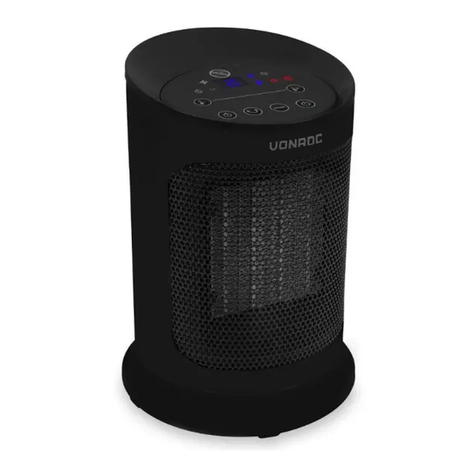
VONROC
VONROC EH513AC Original instructions
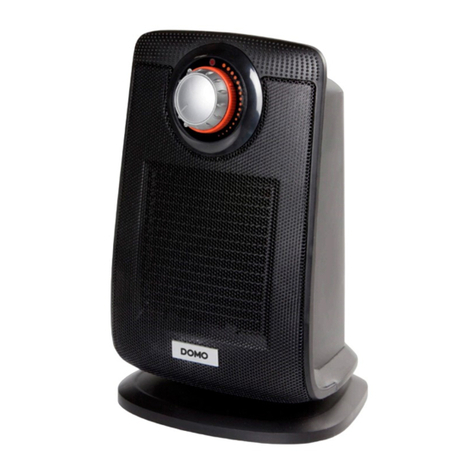
Linea 2000
Linea 2000 DOMO DO7338H Instruction booklet
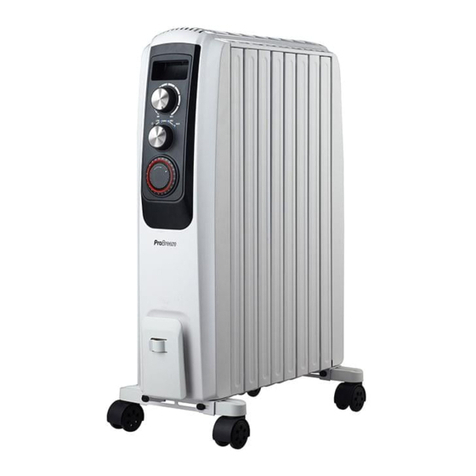
Pro Breeze
Pro Breeze PB-H05 instruction manual

Air King
Air King 3LY41/8540 operating instructions
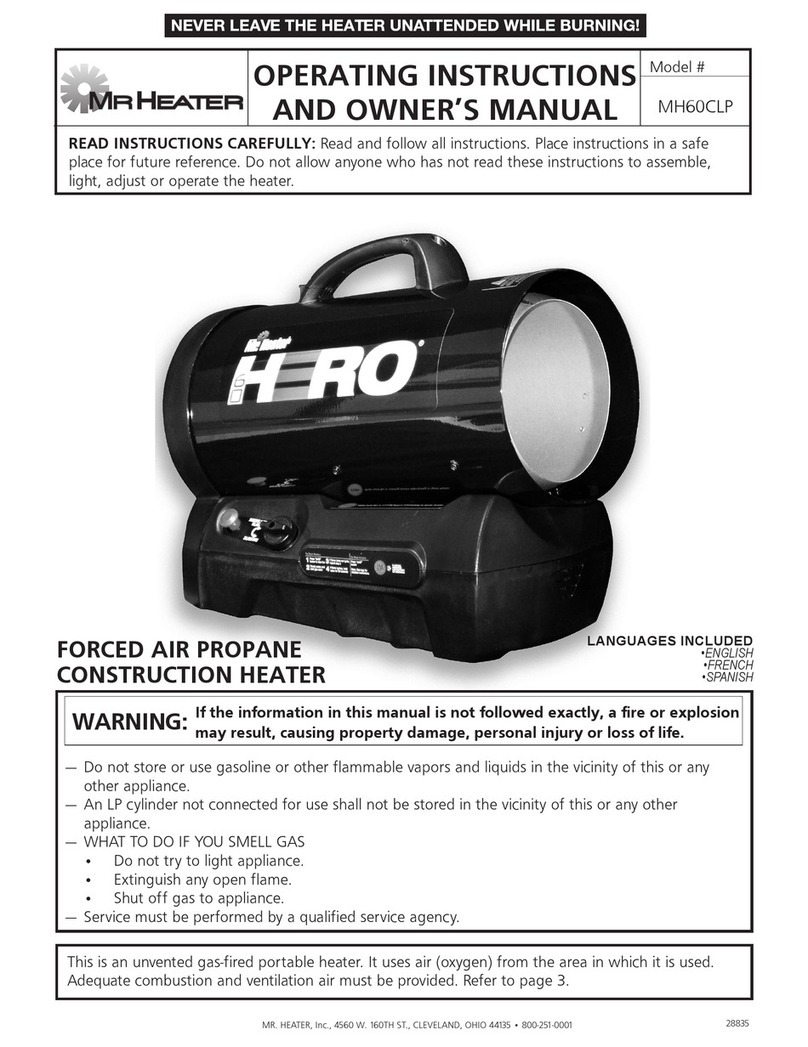
MrHeater
MrHeater MH60CLP Operating instructions and owner's manual

